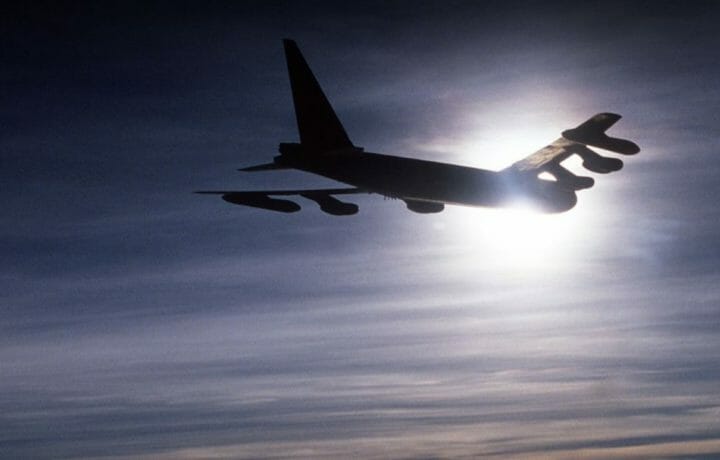No one who flies on the B-52 Stratofortress expects it to be anything like first class on a commercial airliner, but there are likely times that the crew would settle for being in coach on a 747 at the back of the plane! The long-range strategic bomber has been in service for seven decades and could reach its 100th anniversary with the United States Air Force by the time it is finally retired.
As recently reported, the Cold War-era bombers are set to receive new Rolls-Royce F-130 engines, and a new radar system from Raytheon, while L3Harris Technologies was awarded a $34 million contract to modernize the cockpit. It will consolidate the functions of the electronic warfare officer and navigator into a single position, and subsequently reduce the crew size from five to four.
However, even with just four on board, the B-52 is hardly a comfortable aircraft for its crew, a point noted earlier this year by Congressional lawmakers.
The House Armed Services Committee recently called upon the Air Force to determine how the creature comforts for the bomber crew could be improved.
“The committee notes the B-52 crews are flying longer missions, some approaching 24 hours long. Crew comfort on longer missions is important for crew fatigue. The committee directs the Secretary of the Air Force to provide a briefing to the House Committee on Armed Services by February 1, 2025, on potential modifications to improve crew comfort for the B-52,” the report stated.
The “BUFF” Bomber
Since it entered service in the 1950s, the B-52 earned a term of endearment from its crew – “BUFF” as in “Big Ugly Fat F***er,” while those who have flown lengthy missions on it have probably even harsher words to describe it.
In fact, the Stratofortress has earned a reputation for a rough ride over the past 70 years it has been in service. It was no doubt a major improvement over the heavy bombers flown by the Greatest Generation during World War II, as it featured a pressurized cabin so no longer were heavy leather flight jackets, fur caps, and gloves required.
Yet, as the Air Force Times reported, missions can last upward of 30 hours, while “Tight quarters and the deafening roar of its eight engines make the act of counting sheep a hard-fought battle; there’s only one bunk where fading airmen can catch some shuteye.”
The new Rolls-Royce engines will be an improvement, but the seats on the B-52 were still designed back when few considered “ergonomics” so the crew must spend hours hunched over.
Leave the Big Gulp Behind and Don’t Have Chipotle Before a Flight!
Until early 2021, there wasn’t even a privacy screen on the B-52’s lavatory, and that was only added as more women joined the flight crews. The lavatory was also designed to handle liquid waste, and crew members must use a bag for solid waste.
Of course, it should be noted that the B-1B Lancer and B-2 Spirit – the bombers that were supposed to replace the B-52 and which will be retired sooner – also lack any notable amenities. The B-1 has just a small toilet behind the four-person cockpit, while the B-2 has a steel bowl behind the right seat of the twin cockpit that can be used to answer nature’s call during long-haul flights.
By contrast, other military aircraft have more private bathroom compartments or at least partitioned spaces. The C-130 Hercules, which has been in service almost as long as the B-52, has a urinal and toilet at the back of the cargo area, but the crew still has to rely on just a curtain for some privacy. The C-17 Globemaster III transport aircraft and KC-46 Pegasus tanker each have a full lavatory with an actual toilet, sink, and even lockable door.
The KC-135 Stratotanker, KC-10 Extender, and C-5 Super Galaxy also have full lavatories with lockable doors instead of curtains.
The bomber crews may get all the glory but they likely forgo having a big meal before a long flight, and they may even go hours without wanting to even drink a bottle of water.
Improving Crew Performance
There may have been a time when bomber crews accepted that the comforts were far and few between and that it was just part of the job. However, lawmakers have suggested that improved ergonomics and added comforts would improve performance, increase alertness, and decrease fatigue.
Efforts are underway to improve the functionality of the B-52 with better engines and radar, but as the Air Force continues to fly the bombers on longer missions, it may be wise to make it a bit easier for the crew to use the bathroom, and not to be stuck in seats worse than those on a budget airliner.




